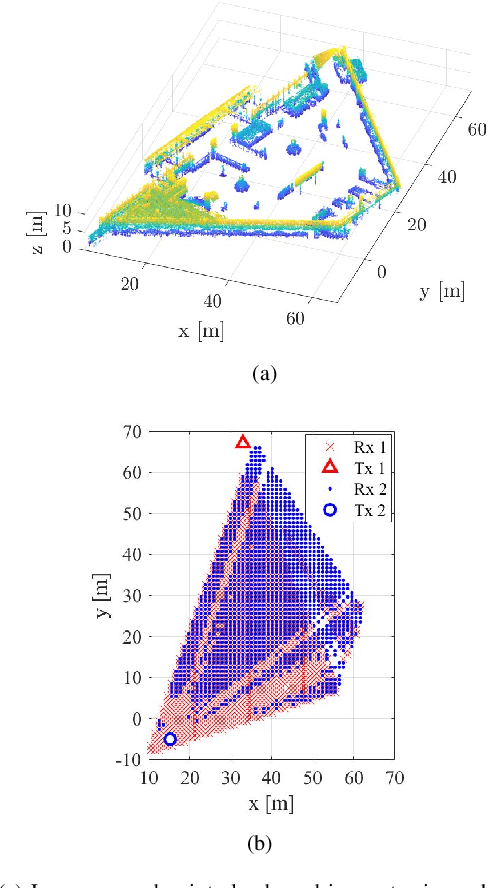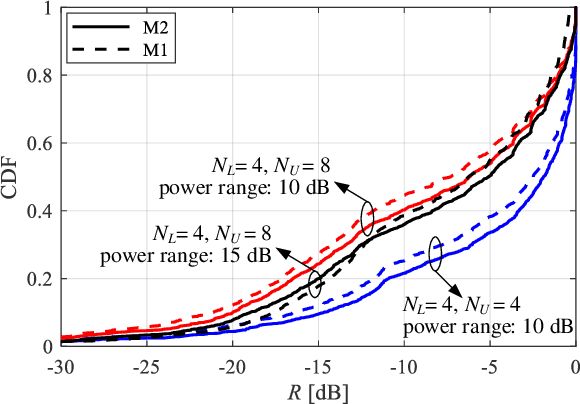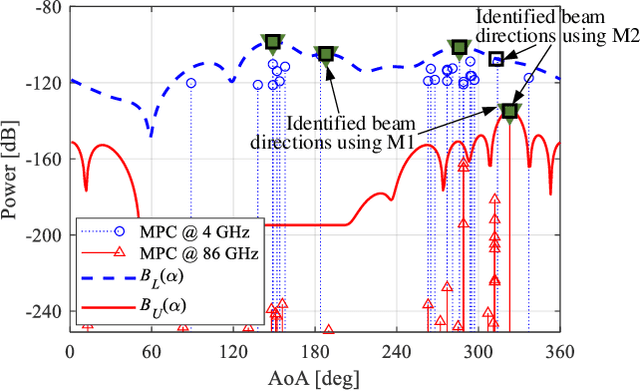Pasi Koivumäki
Ray-Optics Simulations of Outdoor-to-Indoor Multipath Channels at 4 and 14 GHz
Oct 06, 2022



Abstract:Radio wave propagation simulations based on the ray-optical approximation have been widely adopted in coverage analysis for a range of situations, including the outdoor-to-indoor (O2I) scenario. In this work we present O2I ray-tracer simulations utilizing a complete building floor plan in the form of a point cloud. The ray-tracing simulation results are compared to measured channels at 4 and 14 GHz in terms of large scale parameters, namely path loss, delay spread and angular spread. In this work we address the importance of 1) interior walls and propagation paths originating therein, and 2) site-specific knowledge of window structure in accurately reproducing the O2I channel, particularly the presence of a thin insulating metal film on the windows. The best agreement between measurements and simulations was observed for the most detailed simulation. For both frequencies a mean error of less than 1.5 dB is reached for path loss, and a relative error of less than 10% for delay and angular spreads. Not including the metal film in simulations increases error of estimated building entry loss considerably, whereas absence of interior walls is detrimental to reproduction of large scale parameters.
On the Feasibility of Out-of-Band Spatial Channel Information for Millimeter-Wave Beam Search
Aug 11, 2022



Abstract:The rollout of millimeter-wave (mmWave) cellular network enables us to realize the full potential of 5G/6G with vastly improved throughput and ultra-low latency. MmWave communication relies on highly directional transmission, which significantly increase the training overhead for fine beam alignment. The concept of using out-of-band spatial information to aid mmWave beam search is developed when multi-band systems operating in parallel. The feasibility of leveraging low-band channel information for coarse estimation of high-band beam directions strongly depends on the spatial congruence between two frequency bands. In this paper, we try to provide insights into the answers of two important questions. First, how similar is the power angular spectra (PAS) of radio channels between two well-separated frequency bands? Then, what is the impact of practical system configurations on spatial channel similarity? Specifically, the beam direction-based metric is proposed to measure the power loss and number of false directions if out-of-band spatial information is used instead of in-band information. This metric is more practical and useful than comparing normalized PAS directly. Point cloud ray-tracing and measurement results across multiple frequency bands and environments show that the degree of spatial similarity of beamformed channels is related to antenna beamwidth, frequency gap, and radio link conditions.
 Add to Chrome
Add to Chrome Add to Firefox
Add to Firefox Add to Edge
Add to Edge